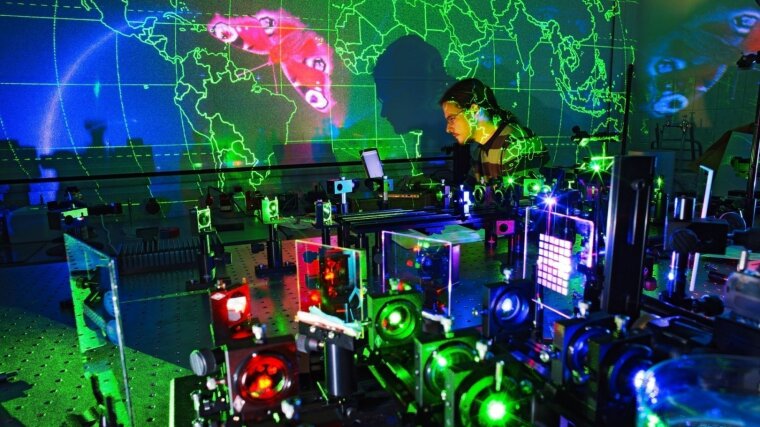
Building on the photon concept as introduced by Albert Einstein in 1905, the invention of the laser in 1960 paved the way for a new era in optics and photonics research by allowing the manipulation of the properties of light on a much wider scale. With optics and photonics acting as catalysts, the invention of photonic technology triggered a far-reaching revolution in many fields of science, medicine, and technology. Prominent examples of this are microscopy and imaging, spectroscopy, medical treatment, life sciences, astronomy, biology, chemistry and communication technology. Electronics, the dominant technology of the 20th century, has lost its position to optics and photonics in the 21st century; this century has been fittingly termed the "century of light". Great challenges in fundamental research and a huge market for optically dominated products drive the evolution of optics and photonics.
Jena's long-standing tradition in this field is characterized by the symbiosis between academic research and a rapidly developing optical industry, as well as its high potential for innovation as already documented by our local pioneers: Carl Zeiss, Otto Schott and Ernst Abbe. In fact, Jena has been a source of innovation in the humanities and science since the 17th century. The multidisciplinary approach common among Jena researchers, as well as Jena's international reputation in top research areas, are key advantages.